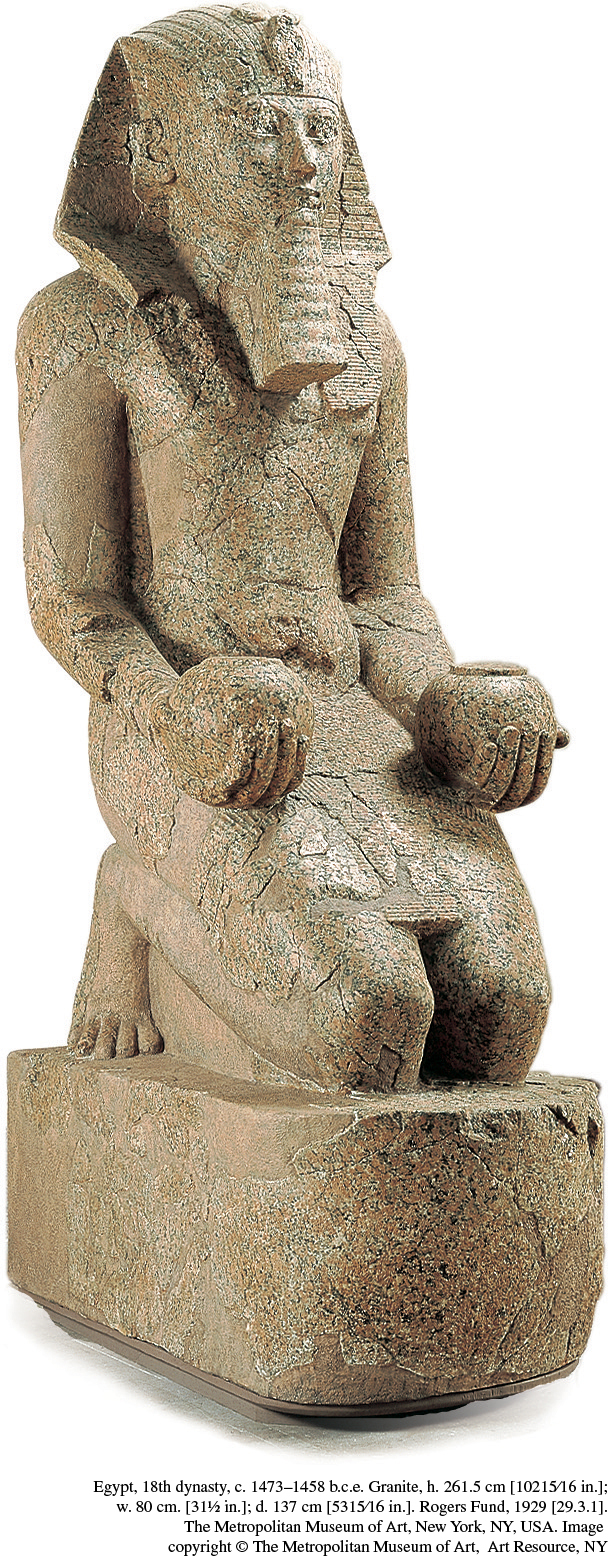
Hatshepsut as Pharaoh Offering Maat
This granite statue, eight and a half feet tall, portrayed Hatshepsut, queen of Egypt in the early fifteenth century B.C.E., as pharaoh wearing a beard and male clothing. She is performing her royal duty of offering maat (the divine principle of order and justice) to the gods. Egyptian religion taught that the gods “lived on maat” and that the land’s rulers were responsible for providing it. Hatshepsut had this statue, and many others, placed in a huge temple she built outside Thebes, in Upper Egypt. Why do you think Hatshepsut is shown as calm and relaxed, despite having her toes severely flexed? (Egypt, 18th dynasty, c. 1473–1458 B.C.E. Granite, h. 261.5 cm [10215⁄16 in.]; w. 80 cm. [31½ in.]; d. 137 cm [5315⁄16 in.]. Rogers Fund, 1929 [29.3.1]. The Metropolitan Museum of Art, New York, NY, USA. Image copyright © The Metropolitan Museum of Art, Art Resource, NY.)